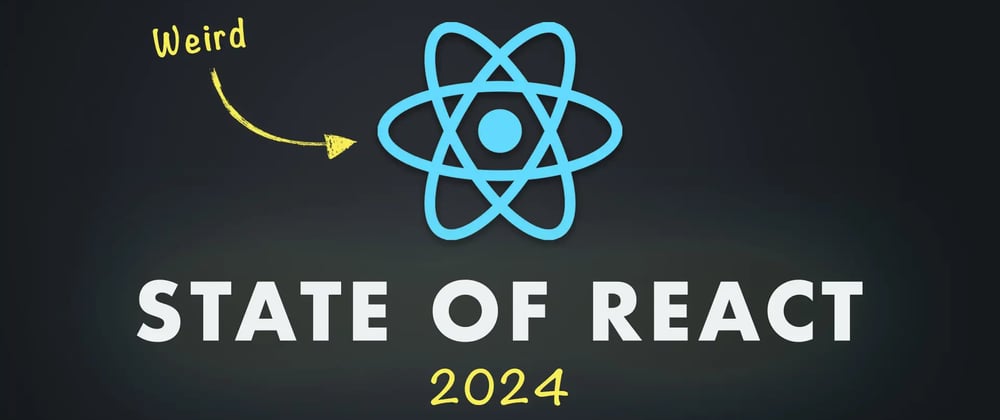The evolution of React has been extraordinary, paralleled by the steady growth of a diverse and sophisticated library ecosystem built upon its foundation.
In this article, we'll explore the myriad of libraries tailored for React projects in 2024.
Your React Journey: Project Setup 🚀
🔰 Vite:
- React app for client-side rendering
- Supports multiple libraries, including React and TypeScript
- Excellent performance
🔰 Next.js:
- React apps for server-side rendering
- Evolved to support static site generation and more rendering modes
- 2023: Introduces React Server Components for a groundbreaking paradigm shift
🔰 Astro:
- Ideal for statically generated React apps
- Compatible with various frameworks
- Optimized performance: Delivers only HTML and CSS initially
🔰 Nitro & Waku:
- For React veterans exploring new tech
- Waku: Developed by Zustand creators, supports React Server Components
- Stay ahead with cutting-edge technologies!
Package Management 📦
🔰 npm:
- Default and widely used
- Bundled with Node.js installation
🔰 yarn:
- Excellent alternative
- Provides solid package management for React
🔰 pnpm:
- Higher performance option
- Relatively new but gaining traction
React State Mastery: Hooks and Beyond 🌐
🔰 Local State Management:
- Utilize
useStateanduseReducerfor powerful state handling inside components. - For co-location or shared state, these built-in React Hooks are your go-to.
🔰 Global State Management:
- Leverage
useContextfor passing properties safely from top-level to sub-components. - Ideal for managing global state seamlessly within React.
🔰 Zustand for Global State:
- If frequent use of React’s Context for global state, consider Zustand.
- Enables the management of global application state, accessible across connected React components.
🔰 Redux:
- Still the most popular choice for React state management.
- Explore Redux Toolkit for enhanced Redux experience.
🔰 Specialized Choices:
- If intrigued by state machines, check out XState and Zag.
- For alternative global stores, consider Jotai, Recoil, or Nano Stores.
Data Collection in React: Choosing the Right Tools 📊
🔰 Remote Data Retrieval:
- For UI state, use React’s built-in Hooks.
- For remote data, opt for TanStack Query for efficient data retrieval, caching, and optimistic updates.
🔰 GraphQL Options:
- TanStack Query (formerly React Query) is versatile for REST and GraphQL APIs.
- Consider Apollo Client (popular), urql (lightweight), or Relay (Facebook-developed) for specialized GraphQL tasks.
🔰 Redux Integration:
- Seamlessly integrate data acquisition and state management with RTK Query for Redux users.
🔰 End-to-End TypeScript Solution:
- For full-stack TypeScript development, explore tRPC for type-safe APIs.
- Improve efficiency and user experience with end-to-end type safety in both front-end and back-end development.
Suggested Implementations: ✅
- TanStack Query with axios or fetch for REST or GraphQL APIs.
- Apollo Client for GraphQL APIs.
- tRPC for a tightly coupled client-server architecture.
React Routing Simplified 🛣
🔰 With a Framework:
- If using Next.js or a similar React framework, routing is built-in.
🔰 Without a Framework (Client-Side Rendering):
- For powerful routing, choose React Router.
- Explore TanStack Router for TypeScript-centric design.
🔰 Code Splitting Optimization:
- When optimizing with code splitting in React Router, consider @loadable/components as a substitute for React.lazy().
Suggestions: ✅
- Most Commonly Used: React Router
- Emerging Trend: TanStack Router
- Especially valuable for first-class TypeScript support.
Elevate Your React Styling 🎨
🔰 Basic Styling for Beginners:
- Start with inline styles and simple CSS using style objects in JSX.
- Limit frequent use of inline styles for cleaner code.
🔰 External CSS Files:
- Place styles in external CSS files for maintainability.
- Learn about CSS modules for encapsulation.
🔰 Advanced Styling Options:
- Explore CSS-in-CSS with solutions like CSS Modules.
- Consider CSS-in-JS options like Styled Components for clean, organized code.
🔰 Practical-First Approach:
- Embrace Tailwind CSS for efficiency and a simplified design system.
Suggestions: ✅
- Practical-First: Tailwind CSS (most popular)
- CSS-in-CSS: CSS Modules
- CSS-in-JS: Styled Components or Facebook’s StyleX
- CSS-in-TS (supports TypeScript and server-side rendering)
Navigating React Component Libraries 🛠
🔰 DIY Components for Learning:
- Building custom components is an excellent learning experience for beginners.
- Master the creation of dropdowns, select boxes, radio buttons, and checkboxes independently.
🔰 Ready-Made UI Libraries:
- If creating all components seems overwhelming, explore pre-built UI libraries.
- Ant Design, Material UI, Mantine UI, Chakra UI, NextUI, Park UI offer design consistency and functionality.
🔰 Trend Towards Styleless Libraries:
- New UI libraries are embracing a styleless approach with full functionality.
- shadcn/ui, Radix, React Aria, Catalyst, Daisy UI, Headless UI, Ark UI (Chakra UI’s sibling) lead the trend.
🔰 Specialized UI Libraries:
- For powerful tables, consider specialized libraries like react-table-library.
- Easily integrate with various themes, such as Material UI, for enhanced functionality.
Highlighted Libraries: ✅
- Most Popular in 2023: shadcn/ui
- Trending Towards Styleless: Radix, React Aria, Catalyst, Daisy UI, Headless UI, Ark UI
Elevate Your Web Animations 🎬
🔰 CSS Foundation:
- All animations kick off with CSS.
- As needs grow, explore advanced options beyond CSS animations.
🔰 Top React Animation Libraries:
- Framer Motion: Highly recommended and versatile.
- react-spring: Dynamic animations with a physics-based approach.
- react-motion: Smooth, fluid animations for React components.
- react-move: Enable animations through React components.
Happy Coding! 🚀



















